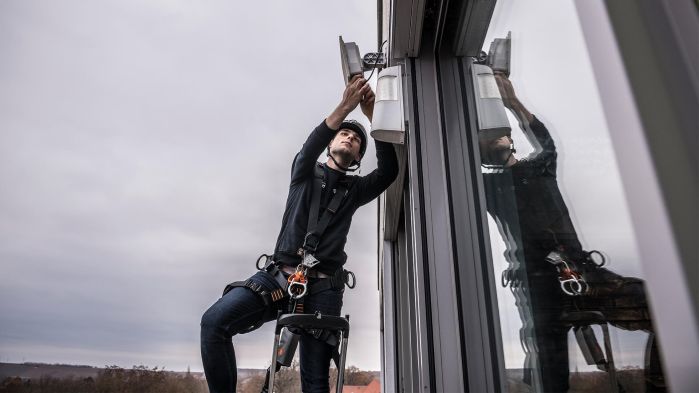The Corona pandemic in particular has shown that our schools in Germany still have great potential in the area of digitalisation. The federal and state governments have recognised this situation and, with the DigitalPakt Schule (Digital Pact for Schools), are making financial resources available to advance the topic and to ensure that schools are better equipped with digital technology.
When they hear the word "digitalisation", many people first think of things that can be "touched", i.e. computers, tablets, beamers, digital boards and much more. However, they forget that the appropriate basis for using these devices must first be created. For example, a broadband internet connection, structured network cabling and especially a functioning WLAN are the basic prerequisites for functioning digitisation. In addition, when setting up the network, special consideration must be given to IT security, because there are many different users of the infrastructure, especially in schools. In addition to pupils, guests and teachers, it is also used for administration. Personal data in particular must therefore be protected. In addition, great attention must be paid to the area of youth protection, because the main users of the infrastructure will be the pupils.
Everyone has a more or less well-functioning WLAN at home. Most of today's routers from internet providers already come with pre-configured WLAN, which is ideally suited for the home environment. The requirements for a school WLAN are much higher than in the home: in a classroom with 25 pupils, there are already between 50 and 100 WLAN-capable devices. Mobile phones, laptops, tablets, clocks, calculators and many more are constantly searching for a functioning WLAN. Yet all of them already use the same medium, the "air", to establish communication. Therefore, when planning an area-wide WLAN, topics such as "airtime fairness", prioritisation and roaming must be included in addition to basic connectivity. Furthermore, when planning a functioning WLAN, interference such as channel overlaps of the individual WLAN access points, external signals or structural conditions such as the attenuation of signals by walls, metal-covered window panes, etc. must also be taken into account when planning a functioning WLAN.
Of course, digitalisation also brings with it many new issues and challenges. In addition to the planning and installation of the devices, the subsequent administration and support of the complete infrastructure should not be lost sight of. It is therefore important that the components used can be monitored and maintained as intuitively and centrally as possible. It would be best here if the system recognises problems and solves them independently or presents the administrator with appropriate solution proposals. This is the only way to ensure smooth operation in schools.



